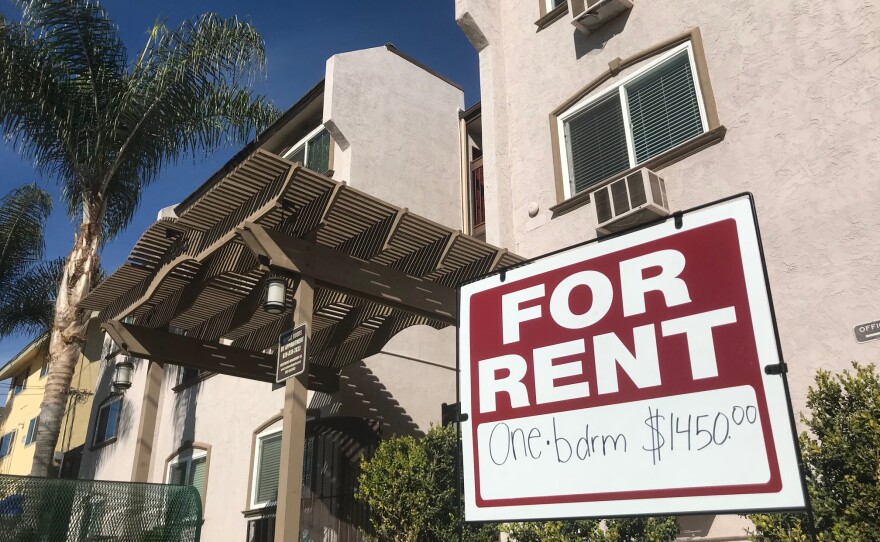Gov. Gavin Newsom signed a suite of bills last month that are aimed at alleviating the state's affordable housing crisis.
Among the bills that became laws was Senate Bill 9, or SB9, which eliminates traditional single-family zoning and allows lot owners to build duplexes and subdivide single-family lots. It remains to be seen how much the new legislation will affect housing availability and affordability in San Diego County.
As local house prices remain at near-historic highs, homeownership remains out of reach for many San Diegans. In this latest special, KPBS Midday Edition takes a deeper look into how San Diego got to this point with housing, and how recent changes may impact local housing into the future.
How we got here
Longtime San Diego journalist Roger Showley said today's housing crisis is nothing new and is a recurring part of San Diego's history.
"(At) many points in our history, we had too many people and too few houses, skyrocketing prices, lots of speculation," he said. "So there's nothing new under the sun."
He said San Diego County was designed around its freeways.
Showley also said the single-family home's dominance in San Diego goes back centuries.
"From 1769 until the present, single-family homes have been the go-to kind of housing type in San Diego," he said. "We were never a tenement type of a city like New York City."
How we got here: Discriminatory practices
Another important piece of San Diego's history when it comes to housing is its history of discriminatory housing practices.
KPBS' Racial Justice and Social Equity Reporter Christina Kim explained how racial covenants, redlining, and other housing laws have been used to exclude non-white San Diegans from living in certain areas of the city, or from homeownership altogether.
Racial covenants are legal documents that detail who can and cannot live on a piece of land.
"One study that I found showed that from a sample of deeds from 1910 through 1950, every single one of these deeds had a racially restrictive covenant," she said.
Kim also brought to light the connection between Rev. Dr. Martin Luther King Jr.'s final visit to San Diego and California's housing policies in the 1960s.
Where we are now: Wages not keeping up with housing prices
Home prices have risen exponentially faster than wages in San Diego County.
Economist and University of San Diego associate professor Ryan Ratcliff said this disparity threatens to price out many San Diegans.
As is the case in many lucrative housing markets, high demand and low supply of available properties has driven up median home prices far past what might be considered affordable for middle- to lower-income earners.
This has caused some to rethink how viable living and working in San Diego is and will be for the foreseeable future. For others, it has made the goal of homeownership seem like an unobtainable goal.
Where we are now
San Diego could be on track to build 10,000 new homes this year, the biggest increase in 15 years. But even that burst of construction would not solve our ongoing housing crisis, nor substantially decrease the cost of new homes.
Most of the new construction is on multifamily units, condos and apartments. That’s in keeping with San Diego’s climate-action goal to increase density and decrease reliance on automobiles. The construction of single-family homes is lagging behind, causing some real estate experts to predict the cost of those homes will continue to skyrocket.
KPBS metro reporter Andrew Bowen discussed the efforts to address the area's housing crisis.












